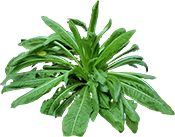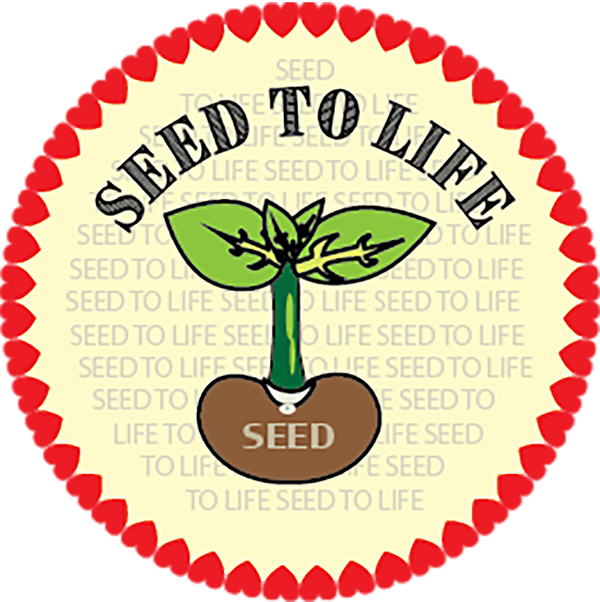
Chicory- Uses and Growing
Share
A Detailed Guide on Chicory - Chicorium intybus
Chicory, a perennial medicinal plant with pretty blue flowers is not just a decorative plant but is believed to have several medicinal uses.
The botanical name of chicory is Cichorium intybus
This plant belongs to asteraceae family.
Other Names / Regional Names of Chicory
- Kasni, Blue Sailors
- Witloof
- Coffeeweed
- Cornflower
- Italian Dandelion
- Succory
- Achicoria
- Chicorée de Bruxelles
- Sikorisallad
- Elgium endive
- French endive
- Italian chicory
- Almeirao
- Hinduba
Chicory intybus vs Curly endive
There is another plant in the US, Curly Endive which is a vegetable used in salad. And this plant is also commonly known as Chicory. It also has curly leaves but it is a different plant.
History of Chicory
Chicory has existed for more than five thousand years. It is an ancient medicinal plant like Ashwagandha, African bitter leaf, Brahmi, and many others. The chicory root is originally from Europe, Africa, and West Asia but Egyptians get the credit for its cultivation. It was cultivated mainly as a forage for grazing cattle. In nineteenth century French started using the dried, roasted root of chicory in their coffee. Ever since chicory is used to modify the taste of coffee. Sometimes it used as a coffee substitute.
Chicory nutritional value
Chicory roots are rich in carbohydrates, contain a good amount of proteins, and have low fats. One of the substance in these roots known as inulin which is a starch like substance is capturing attention of some scientists. This inulin is used to prepare dietary fibres in various dietary product preparations. Chicory leaves are rich in various vitamins and minerals like vitamin K, vitamin A, vitamin C, some B vitamins, and manganese.
Benefits of Chicory
Many researchers study the possible uses and health benefits of chicory. In fact some scientists are trying to modify these plants by making changes to their DNA to make these plants more useful to humans.
- As discussed earlier chicory roots are used in coffee preparation and also by the beer brewers to add nutty flavor to the beer.
- Chicory is grown for cattle as it is a good source various vitamins.
- Chicory plants are sometimes used to decontaminate the soil to remove heavy metals like lead from the soil as the roots of chicory are big
- For human consumption, the roots are bitter tasting so they need to be processed first by steaming or roasting.
- The leaves also can be sautéed.
Health Benefits of Chicory
Coming on to why chicory is considered medicinally useful
- Traditionally the roots, leaves, flowers and seeds that is the entire plant is considered useful as a herbal medicine.
- The leaves are used to treat anemia, jaundice, purification of blood and to improve liver health.
- The extracts from the leaves are used to protect skin and cure skin diseases.
- The decoction of leaves is used to control cholesterol and and as an antiseptic
- The roots can be cooked or dried and roasted to make powder. The roots are also used to cure jaundice, gout, kidney problems, frequent urination, and to control diabetes.
- Chicory seeds are also used in various herbal medicinal preparations.
Chicory Plant Description
Next, let’s see how chicory plant looks like. Chicory plants are from astercean family, The plants starts growing leaves from the base first and then the stems grow taking the plant to the height of 1-1.5 meters. The leaves are stalked, lanceolate in shape. Initially the leaves are long and broad but as the flowers develop the top leaves become smaller. The flowers are usually blue or violet in color but sometimes can be white or pink. These flowers are very useful in attracting beneficial insects to the garden like bees.
Health Benefits of Chicory
Next, let’s see how chicory plant looks like.
Chicory plants are from astercean family, The plants starts growing leaves from the base first and then the stems grow taking the plant to the height of 1-1.5 meters. The leaves are stalked, lanceolate in shape. Initially the leaves are long and broad but as the flowers develop the top leaves become smaller. The flowers are usually blue or violet in color but sometimes can be white or pink. These flowers are very useful in attracting beneficial insects to the garden like bees.
Now we known a lot about this plant. Let’s see how to grow this plant in your homegarden.
Seed Germination and Propagation
Chicory is a perennial plant. It is grown from seeds. Seeds are planted ¼ inch deep. The spacing between plants is about 1-1 ½ feet. Chicory prefers acidic soil with pH between 5-7. It is a cool weather crop grows well in early spring and late fall. The seeds germinate within 1-2 weeks. You can start the seeds indoors in late winter 6-8 weeks before the last frost date or outdoors in early spring after the danger of the frost is over.
I started my plant last winter in my AeroGarden but you can start it directly in the soil or pots. Typically I prefer growing plants only in an organic way. Only sometimes I use AeroGarden to germinate seeds or grow plants. But yes if you grow plants in AeroGarden, they grow pretty fast.
Chicory is a vigorous grower, it soon took over my AeroGarden leaving no space for other plants. Chicory has taproot that grows pretty deep. I had to thoroughly clean my AeroGarden after removing this overgrown plant. It was hard to remove the plant from AeroGarden without damaging its roots and I was worried that I would lose my nicely grown chicory plant but that didn’t happen.
I potted the plant outdoors in a container first where it settled very nicely and then gradually when the root system was completely repaired, I moved it to in-ground. We immediately went to India for a couple of months after that and came back to see the blooming chicory plant surrounded by bees, wasps and other bumblebees. Blooming period is between April-October. You can easily collect the seeds from the dried flowers.
Not many pests attack chicory but still I noticed some aphid infestation after a rain for a week. Other than aphids white mold, cabbage loopers, beetles, slugs can attack chicory.
